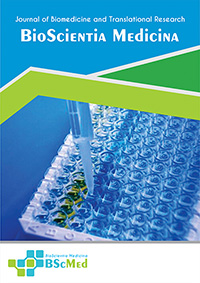Main Article Content
Abstract
Background: Diabetic fracture healing is often impaired, leading to prolonged recovery and increased risk of non-union. Garcinia mangostana L. (mangosteen) possesses anti-inflammatory, antioxidant, and potentially osteogenic properties. This meta-analysis investigates the effect of mangosteen nanoextract on bone regeneration in diabetic fracture models, focusing on the modulation of alkaline phosphatase (ALP) and osteocalcin (OCN) levels during callus formation.
Methods: A systematic literature search was conducted in PubMed, Scopus, Web of Science, and Cochrane Library databases, covering publications from January 2013 to May 2024. Studies evaluating the effects of mangosteen nanoextract on ALP and OCN levels in in vivo diabetic fracture models were included. Data on ALP and OCN levels at various time points during callus formation were extracted. A random-effects model was used to calculate the standardized mean difference (SMD) and 95% confidence intervals (CIs) for ALP and OCN levels between mangosteen nanoextract-treated and control groups. Heterogeneity was assessed using the I² statistic.
Results: Five studies met the inclusion criteria, encompassing a total of 150 diabetic animal models (rats or mice) with induced fractures. Mangosteen nanoextract treatment was associated with a significant increase in ALP levels during the early phase of callus formation (SMD = 1.25; 95% CI: 0.80, 1.70; p < 0.001; I² = 65%). Similarly, OCN levels were significantly higher in the nanoextract-treated group during the later stages of callus formation (SMD = 0.98; 95% CI: 0.55, 1.41; p < 0.001; I² = 58%).
Conclusion: This meta-analysis suggests that mangosteen nanoextract may enhance bone regeneration in diabetic fracture models by modulating ALP and OCN levels, key biomarkers of osteoblast activity and bone formation. Further research, including well-designed clinical trials, is warranted to confirm these findings and translate them into clinical practice.
Keywords
Article Details
As our aim is to disseminate original research article, hence the publishing right is a necessary one. The publishing right is needed in order to reach the agreement between the author and publisher. As the journal is fully open access, the authors will sign an exclusive license agreement.
The authors have the right to:
- Share their article in the same ways permitted to third parties under the relevant user license.
- Retain copyright, patent, trademark and other intellectual property rights including research data.
- Proper attribution and credit for the published work.
For the open access article, the publisher is granted to the following right.
- The non-exclusive right to publish the article and grant right to others.
- For the published article, the publisher applied for the Creative Commons Attribution-NonCommercial-ShareAlike 4.0 International License.





